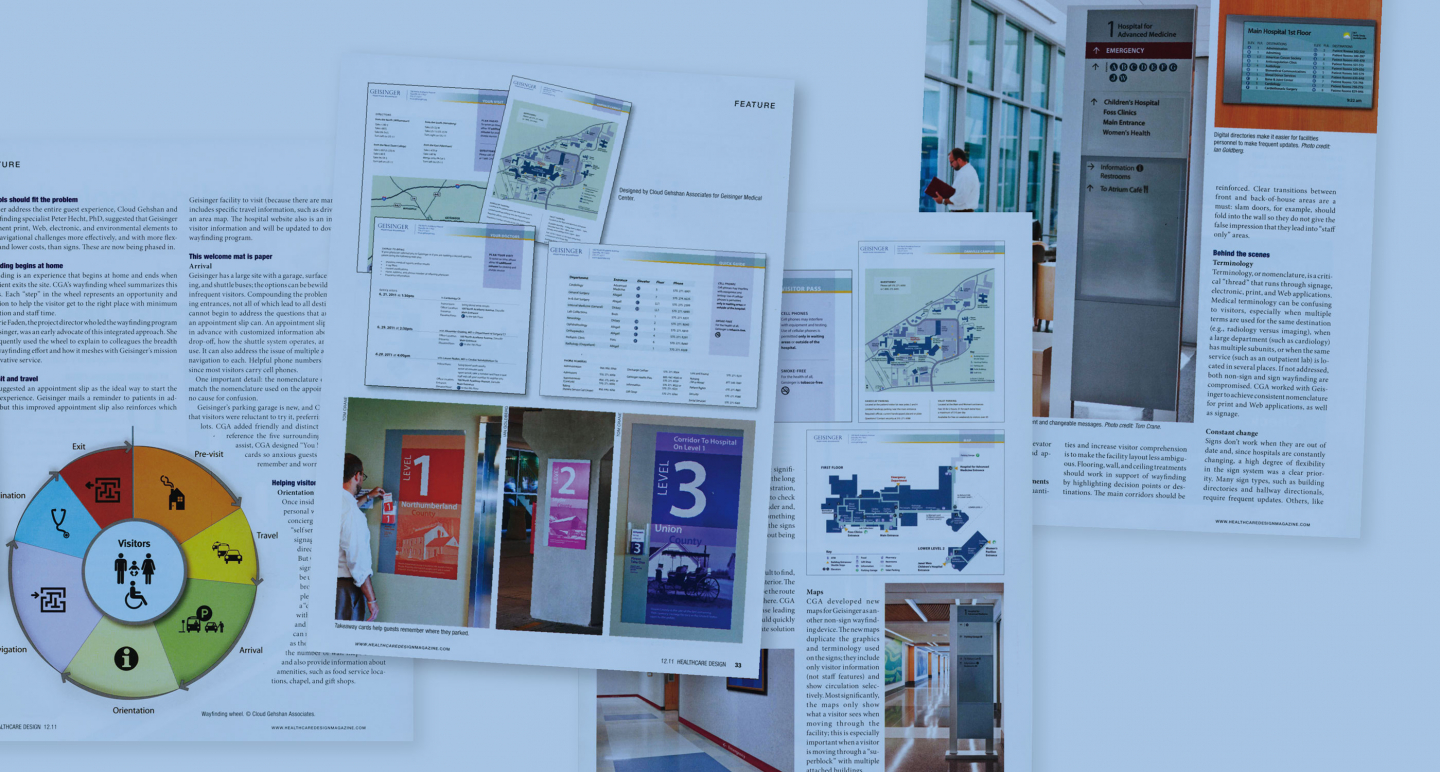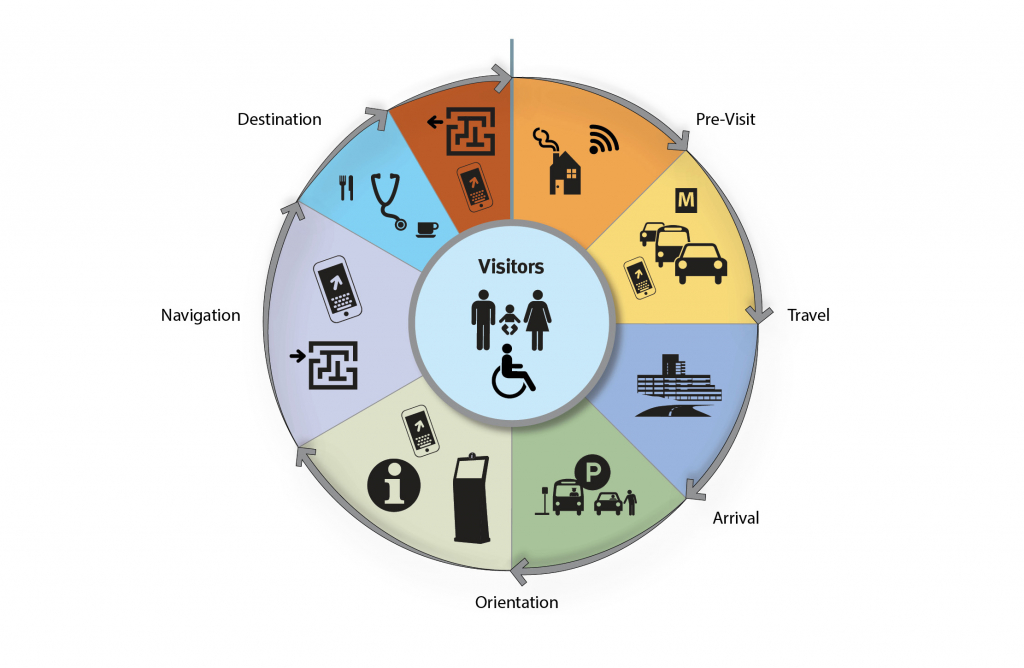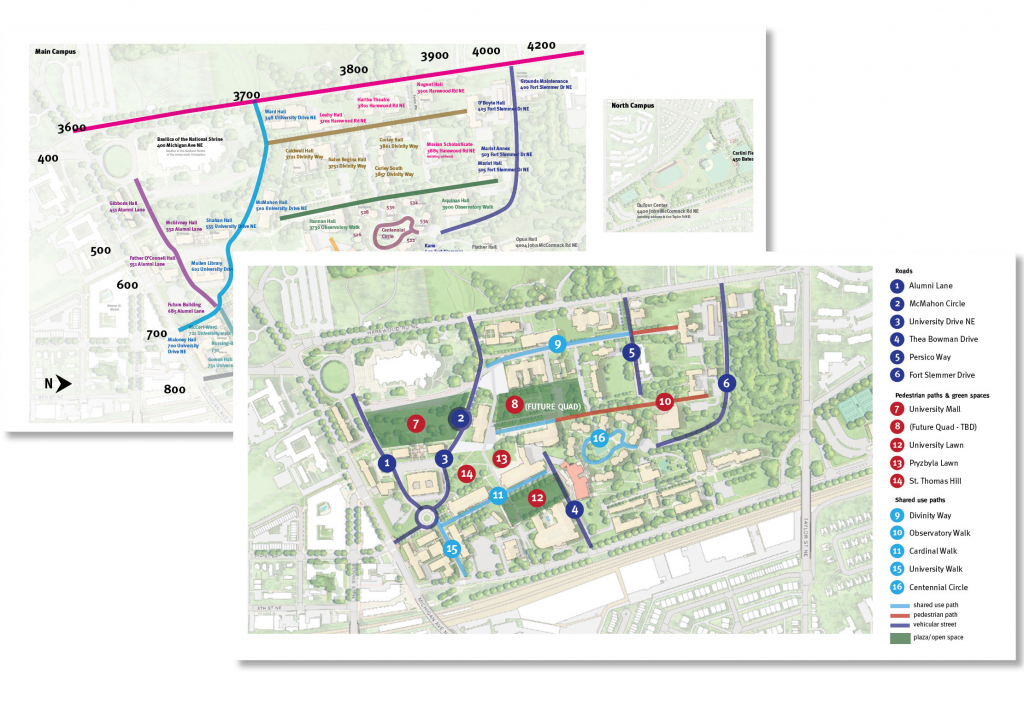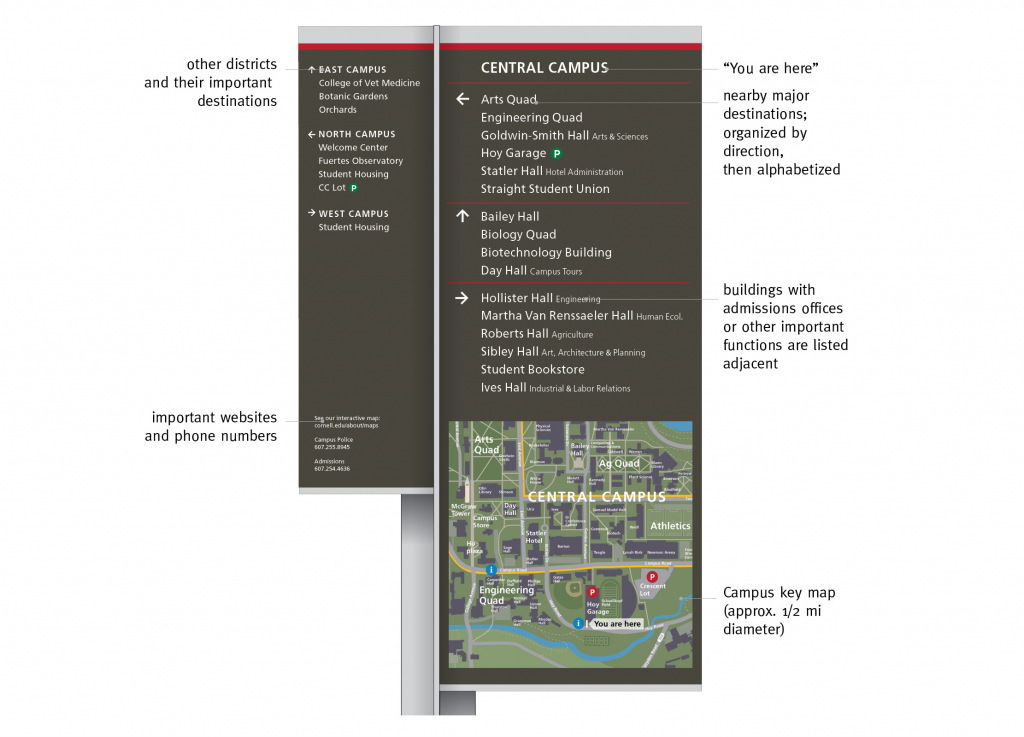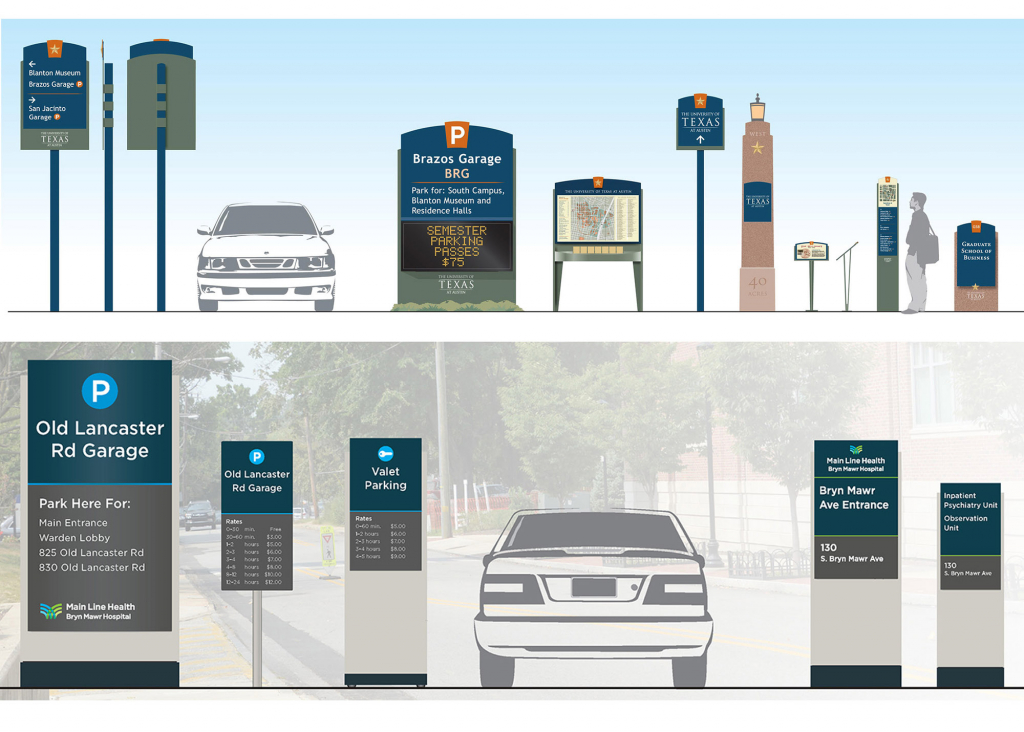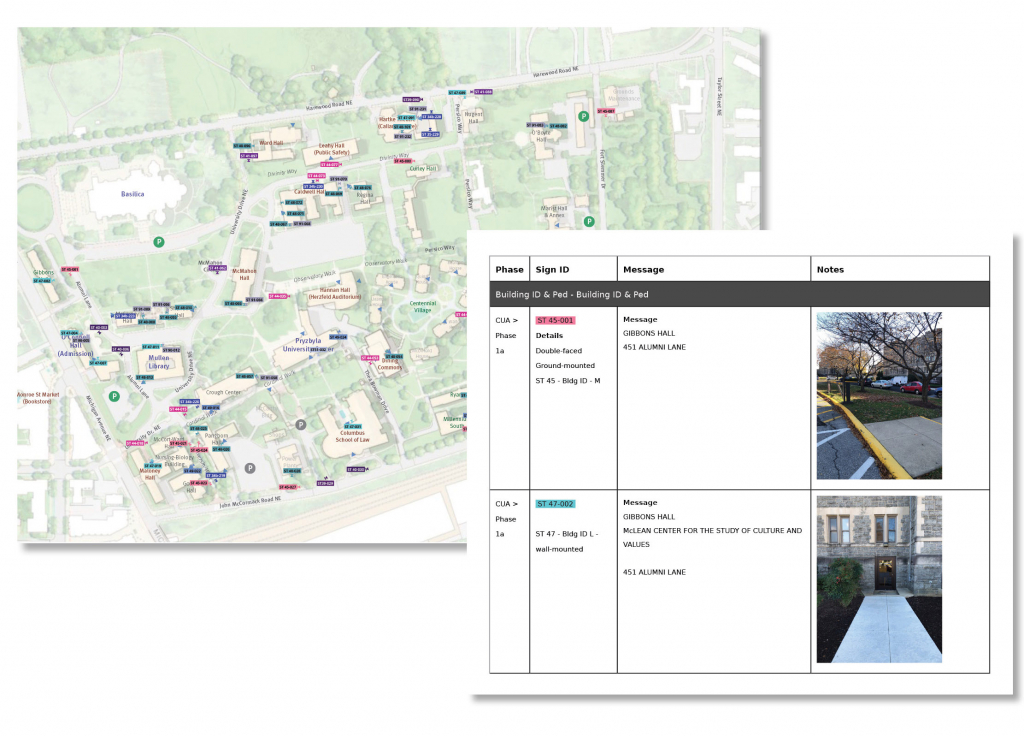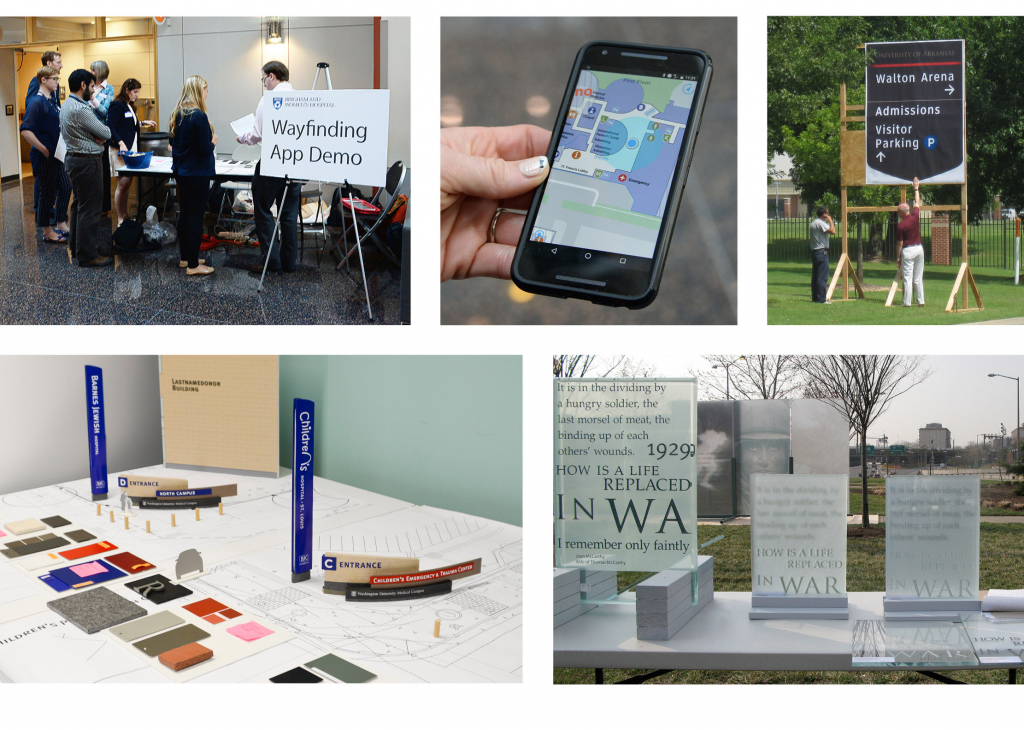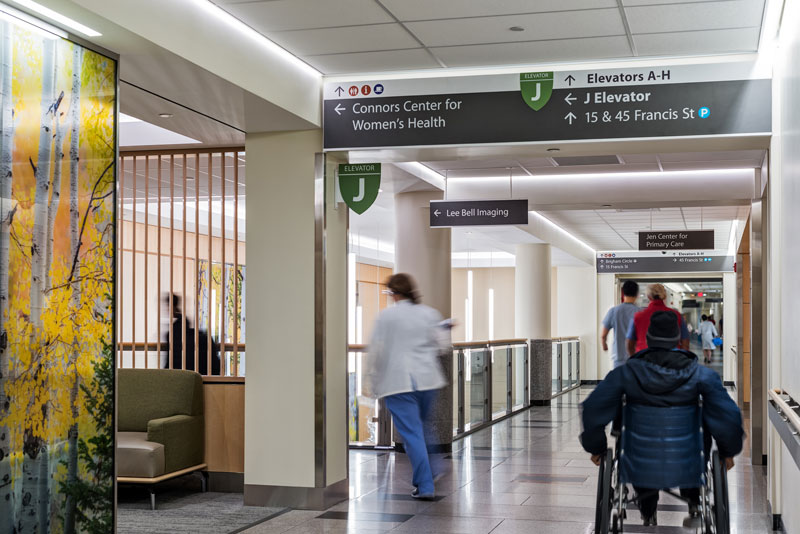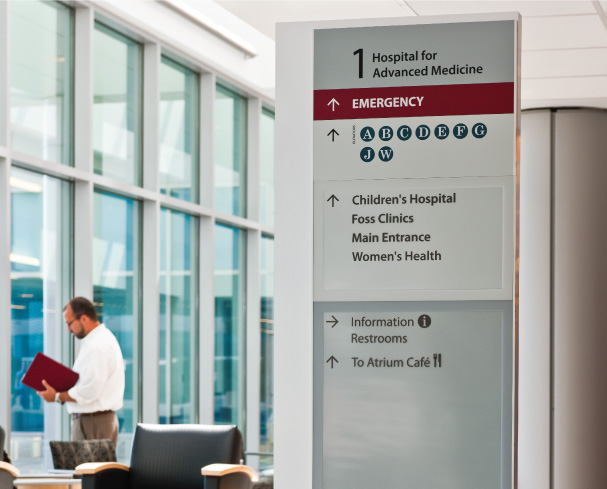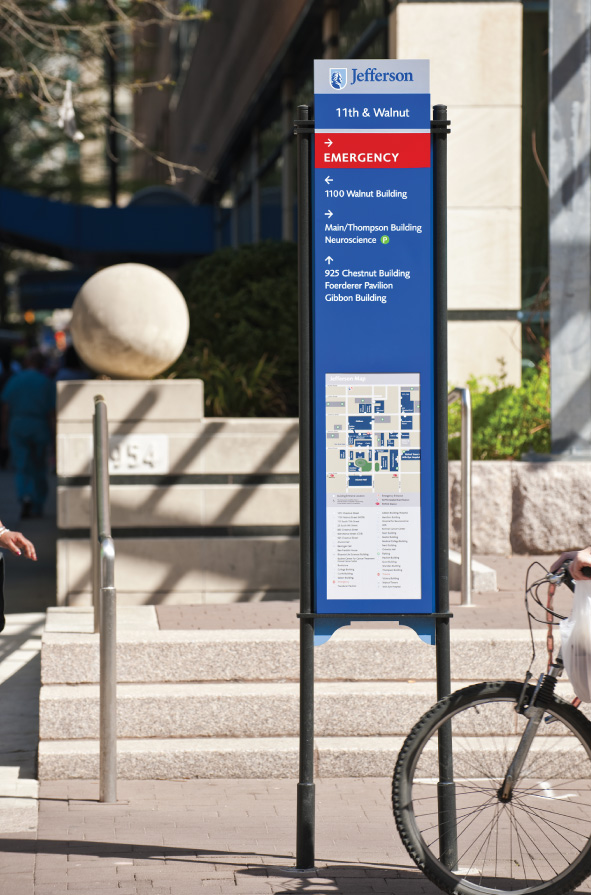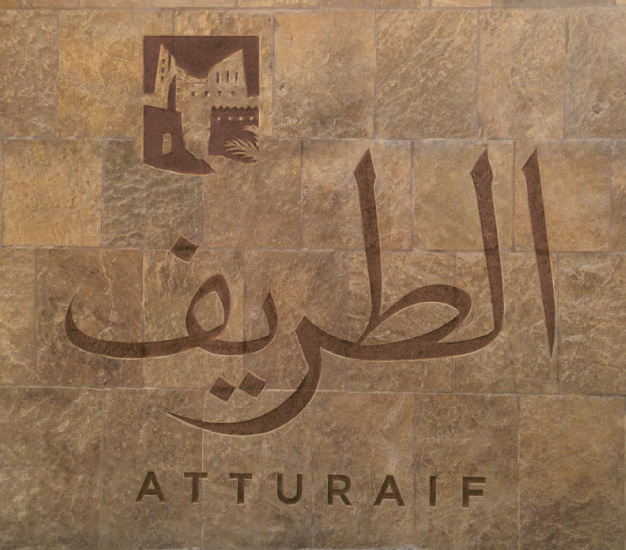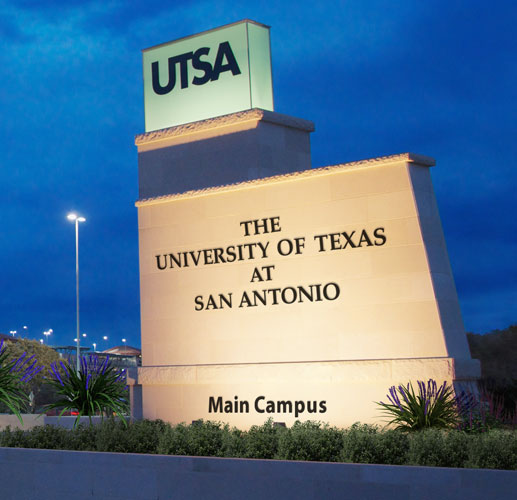Thoughtful planning and design
Cloud Gehshan Design has extensive expertise in making complex environments more user-friendly and accessible with signage and wayfinding master plans. With the overlap of universities, medical centers and urban centers, there is an increased need for planning identification, directional and informational signage that works for all types of users.
Master plan process
Numerous factors are considered in a master plan. A robust stakeholder process ensures that knowledgable and diverse voices contribute. Every plan is customized based on client priorities and the practical considerations of timing and budgets.
- the physical environment: architecture, streetscape, landscape
- mobility: circulation, traffic, parking, transit, pedestrian and bike needs
- sign content: nomenclature, branding, addressing, donor names
- governmental approvals: MUTCD, DOT, local sign codes
- digital media: web sites, GPS, digital signs, phone apps
- sustainability: power usage, materials and finishes, maintenance, lifespan,
- safety: needs of first responders, emergency personnel, and security staff
Visitor experience
To plan for signage and wayfinding, we examine the entire visitor experience, as illustrated in CGD’s visitor experience wheel. We study the many ways that the client communicates with the public, especially first-time visitors, and how they facilitate or complicate wayfinding. Once we identify key issues, we begin to formulate recommendations to improve each step in the journey; many steps can be improved with “non-sign” tools.
De-coding a campus
Even when using GPS or smart phone directions, it is common for visitors to be confused when navigating an unfamiliar place. One of CGD’s primary goals is to help visitors understand the overall campus layout. Both exterior and interior circulation factor into the wayfinding strategy, particularly in dense complexes or “superblocks” where people must navigate through interior spaces, garages, bridges and walkways to reach their destinations.
Digital wayfinding
We study how visitors obtain online information before their arrival. Websites often provide incomplete or incorrect information — they might provide the address of the university, but no information about where to park or how to get to the correct building, or a department might not explain that their office is only accessible from certain elevators or entrances. CGD also recommends digital tools such as wayfinding apps, kiosks, and interactive directories. These are easier to update and can provide more comprehensive assistance.
Skyline
Skyline signs aid wayfinding while reinforcing brands and distinguishing co-branded environments. Name visibility can be challenging in dense urban areas; scale, distance, sight lines and viewing angles must be considered. Other key factors include architectural constraints and sign codes.
Scope
Master plan scopes vary. They might include wayfinding, branding, digital recommendations, schematic design concepts and/or comprehensive sign design and construction documents. In all cases the design solution has to directly support the wayfinding strategy; it must also answer the client’s aesthetic, functional and operational needs.
System management and policies
As a crucial last step, we work with the client to develop clear policies, guidelines and phasing plans that define how the system is to be implemented and maintained over time. Management plans that outline procedures for system build-outs also establish standards for fabrication quality and manufacturer performance.
A selection of wayfinding master plans by CGD:
